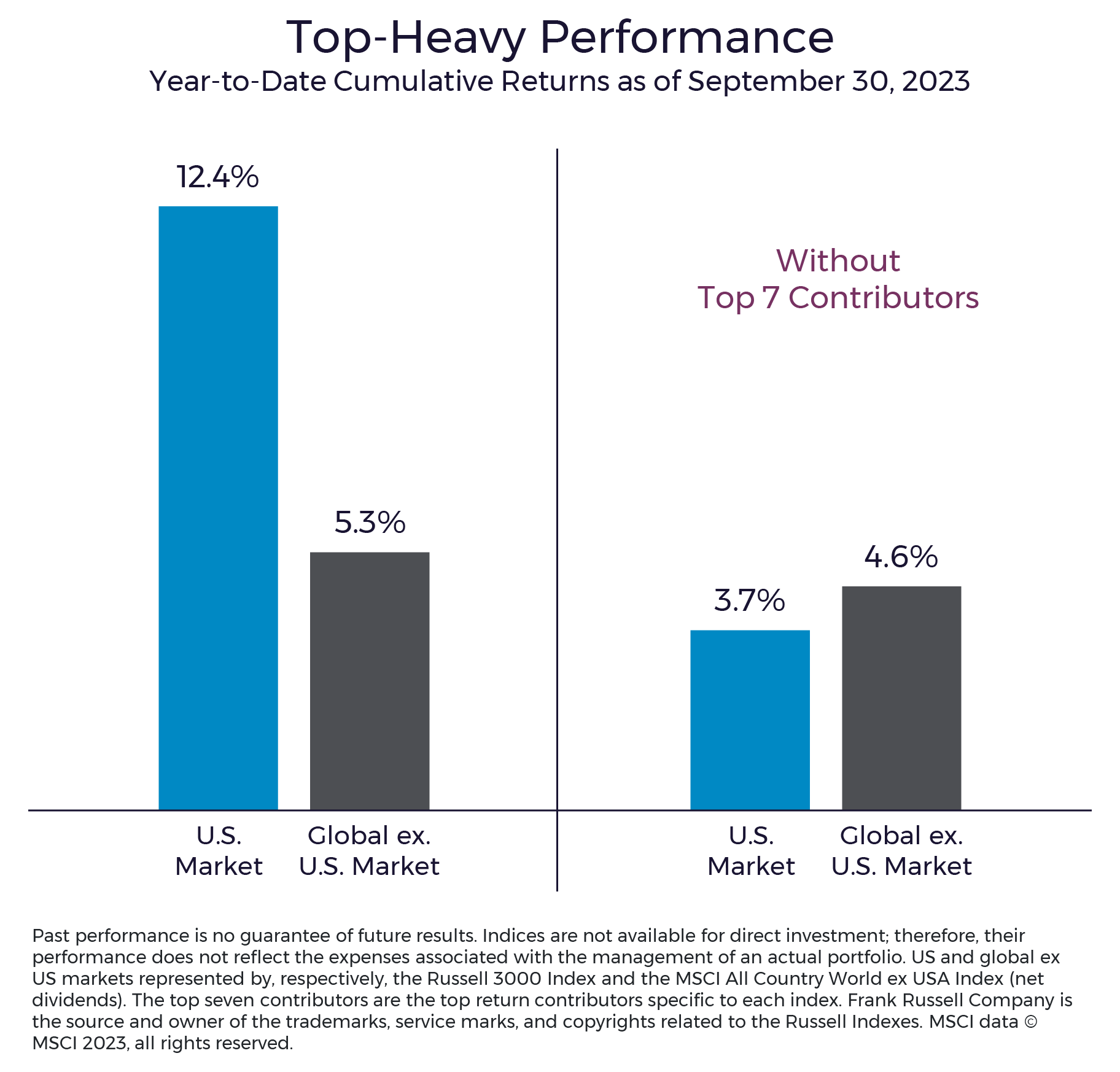Diversification can be painful in the short term but wins in the long term. After a rough 2022, U.S. and international stocks have rebounded this year. In particular, the S&P 500 Index had an especially strong start to the year, driven by a handful of technology stocks.
Surprisingly, more than 70% of the U.S. stock market performance in 2023 has been driven by just seven stocks! Without these seven stocks (Alphabet, Amazon, Apple, Meta, Microsoft, Nvidia and Tesla), the collective performance of the other several thousand U.S. stocks increased by just under 4%, rather than the 12% return with those seven stocks included.

While this may lead do-it-yourself investors to rush into those seven stocks, it makes us hear sirens warning about how concentrated these index returns have become.
Rather than buy more S&P 500, which looks a bit more like a technology sector fund than a diversified market, we think the prudent course is to take those gains and rebalance into the parts of the market that have not kept up. This is what allows investors to retain those winnings rather than “riding the escalator up and elevator down.”
To see the downside of concentrated index returns, we only have to look back a year to 2022. Last year, we wrote about how some of the highest-flying technology stocks in 2020 — commonly referred to as FAANG stocks (Facebook (now Meta), Amazon, Apple, Netflix and Google (now Alphabet) — subsequently realized a 41% drop in value while the Russell 3000 Value Index (a total U.S. stock market index in line with our emphasis on value stocks) was only down 13%.
The tech bubble in the late 1990s experienced even greater swings. Early in their meteoric rise, tech stocks like Dell, EMC, Microsoft and others created millionaires out of people who had just invested a few thousand dollars. Then came the bust, when we heard anecdotal stories of retirees who had piled into the tech-heavy NASDAQ Index only to lose more than 75% in the drop.
Going beyond the United States, in the 1980s, Japan had a remarkable run where Japanese stocks increased in value more than 450% in a decade. They dropped in the early 1990s, and the Nikkei 225 Index has yet to recover its 1989 high, until it came close in the summer of this year.
History often repeats itself, and too often, investors do not listen. At Forum, we recognize that nobody knows when these trends will reverse themselves. All we can do is control our own actions. We can stay as diversified as possible and make sure we plan according to what data and science suggest is most likely to be successful in the long term.





